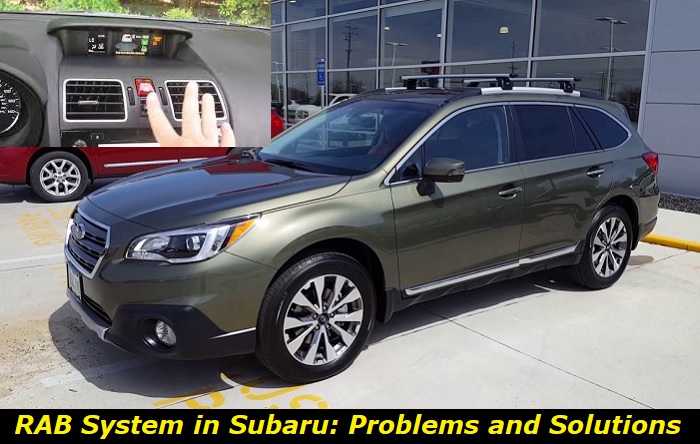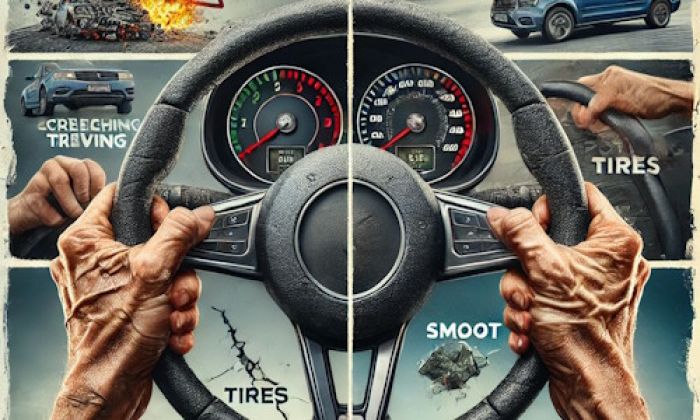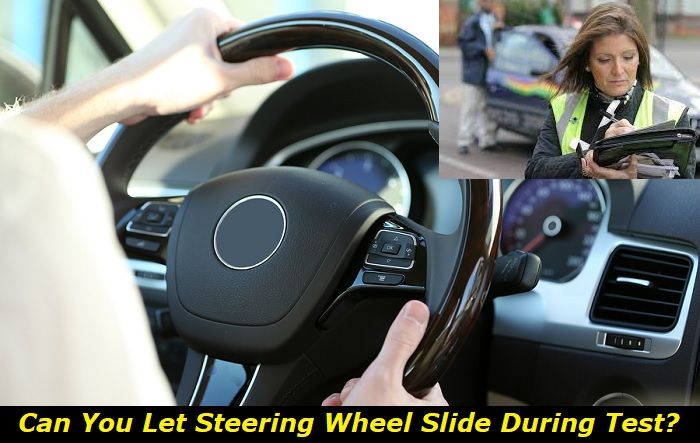It's a major inconvenience to find out that there's something wrong with your car. Whether you own a Subaru or any other vehicle, discovering that something isn't functioning properly makes the entire process of driving less enjoyable and more stressful.
RAB disabled message highlights
- Common reasons:radars out of position, radars are broken, water damage, software issue
- How to fix:clean the radar area, disconnect the battery for some time, get professional help
- Possible consequences:several features won't work
- Priority level:Medium
- Can you drive?Yes
- DIY repair:Impossible
- Repair price range:$100-$750

What is the Subaru RAB system?
Subaru has been a pioneer of safety features in vehicles, and its Reverse Automatic Braking (RAB) system is a prime example. The Reverse Automatic Braking System uses sensors to detect obstacles when a vehicle is backing up. If it senses an obstacle, the RAB system will activate to stop the vehicle.
This helps drivers to avoid unexpected collisions with objects or people behind them. The RAB system works well with other Subaru safety features, such as Pedestrian Detection and EyeSight systems, which help to make driving safer for everyone on the road. It works well until it start throwing weird error messages.
What are the problems with the Subaru Reverse Automatic Braking system, and why do they occur?
It's no secret that the Subaru RAB system has been facing a few hurdles recently. Some of the most common issues include sensor misreadings that cause autonomous braking when there are no obstacles behind the car. This problem can be caused by a variety of factors, such as the use of a receiver hitch, dirt buildup on sensors over time, or debris caught in between components.
1) Receiver hitch
If you're the proud owner of a Subaru vehicle equipped with Reverse Automatic Braking, it's important to be aware of potential sensor issues. If your vehicle includes a receiver hitch, the use of said hitch can cause the RAB sensors to misread. A lot of the owners of Subaru Ascent have been complaining about this problem because RAB misreadings make it very inconvenient for them to use bike racks or trailers.
This is clearly undesirable as the purpose of the RAB system is to detect when something enters its pre-determined range and apply brakes accordingly, so any disruption can lead to inaccurate readings.
2) Dirt buildup on sensors
As an owner of a Subaru, you may have experienced an unexpected jolt during reverse. It could be the result of dirt buildup on sensors, which can cause serious problems for the vehicle's Reverse Automatic Braking system. This dirt can lead to difficulties in detecting smaller objects and even false readings in the system, resulting in sudden braking when no object is detected.
3) Debris caught in between components
The Subaru Reverse Automatic Braking system is probably the most helpful feature that this car manufacturer has ever packed into their vehicles. However, debris can sometimes get stuck in between components of these sensors, posing problems that require mechanics to take a look at it.
Unfortunately, these malfunctions could possibly lead to an unsafe situation if you're not paying close attention while reversing your car. It's important that Subaru owners check their Reverse Automatic Braking systems regularly and make sure they are working properly.
How can you tell if your car has a RAB issue?
If you suspect your Subaru is having an issue with its Reverse Automatic Braking, there are several things you can keep an eye out for. The most obvious first step is to pay attention to the car's response when reversing, as it should be able to keep a steady speed.
If the car begins to slow down suddenly or fails to respond when accelerated, it could be a sign of an issue - if this happens, it's best to bring your vehicle in for repair as soon as possible. The most obvious sign of the RAB system malfunctioning is when your car stops when there are obstacles behind it.
You may also notice a squeaking or squealing noise coming from the brakes while reversing. If this sound persists and is not fixed by applying pressure to the brake pedal, then it means your vehicle needs servicing.
What are some possible ways to fix the Subaru RAB problems yourself?
The Subaru Reverse Automatic Braking problems can be a nuisance, but there are some potential solutions you can try to fix it yourself.
- First of all, make sure that there is always adequate space between anything attached to your car and the RAB system. As explained above, the RAB system may detect these car attachments as obstacles and trigger an unwanted stop.
- It is important to regularly clean your car's RAB sensors to make sure that this problem does not occur and avoid unnecessary jolts when going into reverse. Keep your Subaru running smoothly with regular maintenance and ensure that dirt buildup does not get in the way of your safety!
- The problem of debris being stuck in the components of the RAB system requires delicate handling because even the smallest dust particles and granules can interfere with the system's smooth functioning. If you experience any issues with your Subaru RAB system, it would be wise to bring your vehicle in for a check-up as soon as possible because it may be a symptom of a serious technical problem that requires professional attention.
- Simply turn off the RAB system. The Subaru Reverse Automatic Braking system was designed to help you avoid accidents when driving a car in reverse gear. However, if the system malfunctions, it can cause problems with unwanted braking. Fortunately, you can solve this problem very easily - all you need to do is turn off the system with one simple press of a button! That way, you can avoid the worries about not being able to control your vehicle's movements and take your car to a mechanic. Furthermore, you can turn off the RAB system when you are towing, which will protect you from unnecessary stress.
All of these possible solutions should help you resolve that pesky RAB problem in your Subaru vehicle.
When is it time to take your Subaru to a professional mechanic?
Knowing when it's time to take your car in for repair can be tough. With so many DIY fixes out there and all the tricks that can be picked up from the internet, it can be hard to admit that a problem is too complex.
But when it comes to Subaru Reverse Automatic Braking problems, it's best not to wait. Getting too far without professional help can lead to costly repairs in the future and even long-term damage. That's why if you're starting to experience automatic braking problems when running in reverse, you should take your car to a mechanic right away.
A pro will be able to detect any issues at their early stages, putting you one step ahead of further damage down the line.
How much will it cost to repair the Subaru RAB system?
Are you wondering how much money it'll cost to repair your Subaru's Reverse Automatic Braking system? Well, the truth is that it depends. The cost of a repair could range from a few hundred dollars to over two thousand, depending on the severity of the damage.
If the system has been severely affected due to hardware damage, it could be an expensive fix to get it back up and running. But if the problem is minor, then you may be able to bring down the cost. As a precautionary step, we would recommend speaking with a trusted mechanic before you attempt any repair work on your own.
How can you prevent the problems with the Subaru RAB system from happening in the first place?
Prevention is always better than cure, and this certainly applies to the Subaru Reverse Automatic Braking system. To protect yourself and your car, regularly check your brake fluid levels and caliper - this will help ensure that everything is in working order. You can also keep an eye out for warning signals like pulsing or loud braking noises, which usually indicate a bigger issue.
Please, follow the guidelines for proper towing and be careful when attaching bike racks or other objects. They should always be at a proper distance from the RAB sensors. Finally, it's smart to get a yearly inspection from a certified mechanic - it may seem costly at first, but it's worth the peace of mind knowing that your brakes are running smoothly!
The Bottom Line
Although the Subaru RAB system is a great safety feature, it's not perfect. If you're experiencing problems with your RAB system, there are some things you can try to fix it yourself. However, if the problem persists, it's probably best to take it to a professional.
Luckily, in most cases, the repairs shouldn't cost too much. To prevent future issues with your RAB system, be sure to clean your sensors and keep them free of debris.
Have you experienced any problems with your Subaru's Reverse Automatic Braking system? What did you do to fix them? Let us know in the comments below!
About the authors
The CarAraC research team is composed of seasoned auto mechanics and automotive industry professionals, including individuals with advanced degrees and certifications in their field. Our team members boast prestigious credentials, reflecting their extensive knowledge and skills. These qualifications include: IMI: Institute of the Motor Industry, ASE-Certified Master Automobile Technicians; Coventry University, Graduate of MA in Automotive Journalism; Politecnico di Torino, Italy, MS Automotive Engineering; Ss. Cyril and Methodius University in Skopje, Mechanical University in Skopje; TOC Automotive College; DHA Suffa University, Department of Mechanical Engineering






Add comment